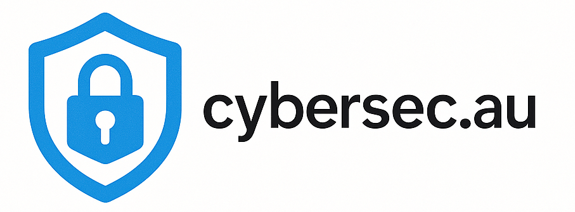Quantum computing promises to revolutionize technology—but it also threatens to break the encryption that protects our digital world. While large-scale quantum computers are still years away, Australian businesses need to start preparing now for a post-quantum future where today's security measures may no longer be sufficient.
⏰ The Quantum Timeline
Current State
Limited quantum computers for research
- IBM, Google quantum prototypes
- Cryptographically irrelevant
- Research and development focus
Threat Emergence
Quantum computers may threaten some encryption
- Potential RSA-1024 vulnerability
- Early post-quantum adoption
- Hybrid security approaches
Cryptographic Apocalypse
Current encryption potentially obsolete
- RSA, ECC encryption broken
- Post-quantum crypto essential
- Complete security overhaul needed
Understanding the Quantum Threat
Here's the thing about quantum computing and cybersecurity: it's not just about faster computers. Quantum computers work fundamentally differently from traditional computers, and this difference makes them incredibly powerful at solving certain types of mathematical problems—including the ones that keep our data safe.
What Makes Quantum Computing Different?
Traditional computers process information in bits (0s and 1s). Quantum computers use quantum bits (qubits) that can exist in multiple states simultaneously. This allows them to:
- Parallel processing: Explore multiple solutions simultaneously
- Exponential scaling: Each additional qubit doubles computing power
- Pattern recognition: Excel at finding patterns in complex data
- Factorization: Break down large numbers efficiently
Why Current Encryption Is Vulnerable
Most of today's encryption relies on mathematical problems that are easy to create but hard to solve—like factoring large prime numbers. What takes traditional computers thousands of years, quantum computers could potentially solve in hours.
🔐 Encryption Vulnerability Assessment
⚠️ Quantum-Vulnerable
- RSA encryption
- Elliptic Curve Cryptography (ECC)
- Diffie-Hellman key exchange
- Digital signatures (DSA, ECDSA)
These could be broken by quantum computers
✅ Quantum-Safe
- AES-256 symmetric encryption
- SHA-3 hash functions
- Lattice-based cryptography
- Hash-based signatures
These remain secure against quantum attacks
The "Harvest Now, Decrypt Later" Threat
Here's what keeps cybersecurity experts awake at night: adversaries don't need to wait for quantum computers to be a threat. They're already collecting encrypted data today, planning to decrypt it once quantum computers become available.
This means that sensitive data encrypted today could be vulnerable in 10-15 years. For Australian businesses, this raises important questions:
- Will your customer data still be sensitive in 2035?
- Do you have intellectual property that needs long-term protection?
- Are you storing encrypted backups that could be compromised later?
- Do you have compliance requirements for long-term data protection?
Preparing for the Post-Quantum Era
Start with Inventory
You can't protect what you don't know you have. Begin by cataloging:
- Encryption usage: Where and how you use encryption today
- Certificate inventory: All SSL/TLS certificates and their algorithms
- Application dependencies: Third-party software and their encryption methods
- Data sensitivity: Information that needs long-term protection
Implement Crypto-Agility
Design your systems to easily swap out cryptographic algorithms:
- Modular design: Separate encryption from application logic
- Algorithm abstraction: Use libraries that can support multiple algorithms
- Configuration management: Centralized control of cryptographic settings
- Testing frameworks: Ability to test new algorithms before deployment
🗺️ Quantum Readiness Roadmap
Assessment (2025)
- Inventory current encryption
- Identify quantum-vulnerable systems
- Assess data sensitivity and longevity
- Evaluate vendor quantum readiness
Planning (2026-2027)
- Develop migration strategy
- Test post-quantum algorithms
- Update procurement requirements
- Train technical teams
Implementation (2028-2030)
- Deploy hybrid cryptography
- Migrate critical systems
- Update vendor contracts
- Monitor quantum developments
What Australian Businesses Should Do Now
Don't Panic, But Don't Ignore
Quantum computing isn't an immediate threat, but it's not science fiction either. The smart approach is to start preparing gradually:
- Stay informed: Follow quantum computing developments and NIST standards
- Plan for change: Build flexibility into your security architecture
- Engage vendors: Ask about their quantum readiness plans
- Consider longevity: Factor quantum threats into long-term planning
Work with Forward-Thinking Partners
Choose cybersecurity partners who are already thinking about the quantum future. Leading providers like Affinity MSP are:
- Monitoring post-quantum cryptography developments
- Planning migration strategies for clients
- Testing quantum-safe technologies
- Providing guidance on quantum readiness
The Australian Government's Quantum Strategy
The Australian Government has recognized quantum computing as both an opportunity and a threat. The National Quantum Strategy includes specific cybersecurity recommendations:
- Research investment: Funding for quantum-safe cryptography research
- Standards development: Contributing to international quantum-safe standards
- Industry guidance: Providing guidance for businesses and government agencies
- Skills development: Training programs for quantum technologies
Practical Steps for Today
Immediate Actions (No Cost)
- Include quantum threats in your risk assessments
- Ask vendors about their quantum readiness plans
- Follow NIST post-quantum cryptography standards development
- Include quantum considerations in long-term IT planning
Medium-Term Investments (Low Cost)
- Implement crypto-agility in new systems
- Test post-quantum algorithms in development environments
- Update procurement policies to include quantum considerations
- Train technical teams on post-quantum concepts
Long-Term Planning (Higher Investment)
- Migrate critical systems to quantum-safe encryption
- Implement hybrid classical-quantum cryptography
- Partner with quantum-ready technology vendors
- Develop quantum incident response capabilities
The Bottom Line
Quantum computing represents both the biggest threat and biggest opportunity in cybersecurity's future. The businesses that start preparing now will be ready when the quantum era arrives. Those that wait may find themselves scrambling to protect data that's already been compromised.
The good news? You don't need to become a quantum expert overnight. Start with awareness, build flexibility into your systems, and work with cybersecurity partners who are already planning for the quantum future.
Future-Proof Your Cybersecurity
Quantum computing will reshape cybersecurity. Get expert guidance on preparing for the post-quantum era from Australia's forward-thinking cybersecurity specialists.
Get Free Security Scan